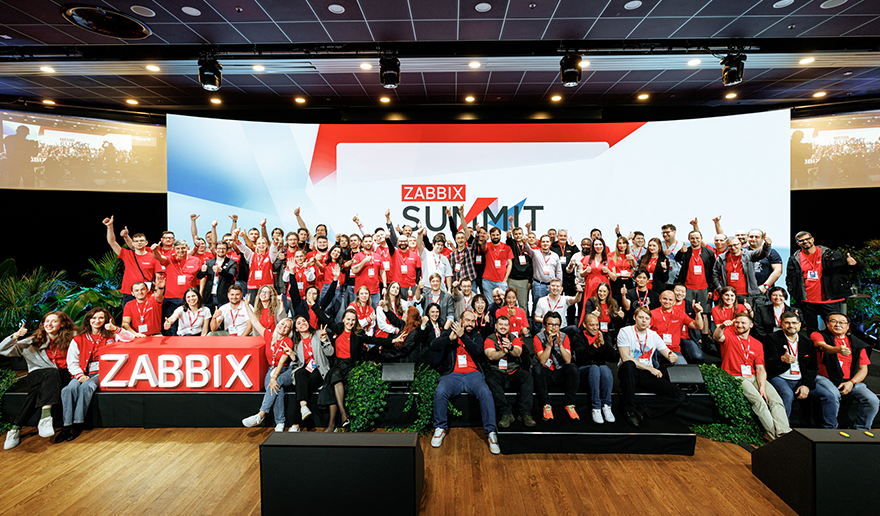 More than a month ago probably the furthest ever training of Zabbix happened. It was also a very exciting environment where Zabbix was being introduced. Meet Montevideo, Uruguay and Plan Ceibal.
More than a month ago probably the furthest ever training of Zabbix happened. It was also a very exciting environment where Zabbix was being introduced. Meet Montevideo, Uruguay and Plan Ceibal.
During the second week of September Zabbix training session was held in Montevideo, capital of Uruguay.
Uruguay, as well as Montevideo, bears some resemblance to home of Zabbix – Latvia and Riga. Population of Uruguay and Montevideo is quite close to population of Latvia and Riga, capital city concentrates large part of the population… but capital cities are separated by a bit less than 13 000 kilometers. To see how far that really is, let’s look at this image from OpenStreetMap:
Riga – right, Montevideo – left. © OpenStreetMap contributors, CC-BY-SAGiven that circumference of Earth is some 40 000km, it’s not as far as it gets, but quite far. So what does Zabbix do there?
Uruguay is home of one of the biggest, if not the biggest, OLPC deployments. If anybody does not know what OLPC is, that’s the One Laptop Per Child project, which aims to do just that – provide means for each and every child to participate in informational exchange by distributing low-cost laptops.
Primarily managed by Plan Ceibal (website in Spanish) project in Uruguay, so far there have been 420 000 laptops shipped to date, fully covering primary school (first 6 grades). Plan Ceibal itself is having quite a scale with a new building this year inside LATU (Laboratorio Tecnológico del Uruguay) complex – it’s so new it’s not even yet on the map.
 |
 |
| Emilio, Network Maintenance Leader at Plan Ceibal, showing a few OLPC laptops. | OLPC XO laptops in the lobby of Los Ceibos, bulding of Plan Ceibal. |
Additional part of this project – and this is where Zabbix steps in – is to provide internet coverage to some 3000 locations all over Uruguay, primarily schools. Obviously, with deployment of such scale one must think about monitoring things that unavoidably will go wrong every now and then. After evaluating several solutions, they (expected 😉 ) decided to go with Zabbix. Turns out, one of the main reasons for such a decision was the existence of Zabbix proxy. And, if we think about it for a moment, it’s actually clear why – with that many remote locations with possibly flaky network connections, devices on the spot might be unavailable from a central location for hours, maybe even for days in extreme cases. Zabbix proxy, with its ability to cache data locally and relay to Zabbix server once connection is available again, deals with these network problems nicely. As a result, all availability and performance data is gathered locally and once the connection is back up again, it can be viewed in the frontend also for the downtime period.
For people involved in overseeing all this a Zabbix training course was deemed necessary, and hopefully one week of hands-on Zabbix work coupled with constant mate sipping provided knowledge basis needed to run such a setup (Zabbix setup, everybody was already very proficient with mate) successfully.
 |
 |
| During the class. Mate cup for everybody | Zabbix certified specialists at Plan Ceibal – Veronica, Juan Pablo, Luis Manuel, Andres, Javier |
Special thanks goes out to participants for a tour on the old town and seaport region (even though it didn’t seem to be the safest place on Earth), as well as a lecture on Uruguayan music, including punk music.
Of course, having a project of such a scale can push Zabbix to the limit – for example, managing some 3000 proxies with the current Zabbix frontend might be a slight challenge, even with the recently improved proxy view.
Additionally, it would be interesting to see how well Zabbix frontend does when tasked with drawing a network map with almost 3000 objects.
Current deployment is not an end of a journey – other extremely interesting topics involve putting Zabbix daemons inside wireless routers running OpenWRT and even having fully autonomous access points/repeaters that draw power from a solar panel, just like the prototype depicted below.
 |
 |
| Autonomous wireless setup, ferociously guarded by killer birds | Dangerous |
So good luck to Plan Ceibal team spreading knowledge with laptops, free internet connectivity – and Zabbix.








 Prev Post
Prev Post 





Do you plan training in Republic of Belarus? For example, in Grodno or Minsk?
as far as i know, there are no specific plans currently – but interested parties are always welcome to contact us. for more details, please see http://www.zabbix.com/forum/showthread.php?t=15351
Hola te esperamos con ansias a que vuelvas, eso si para la proxima no encajes chancletas con medias 😀